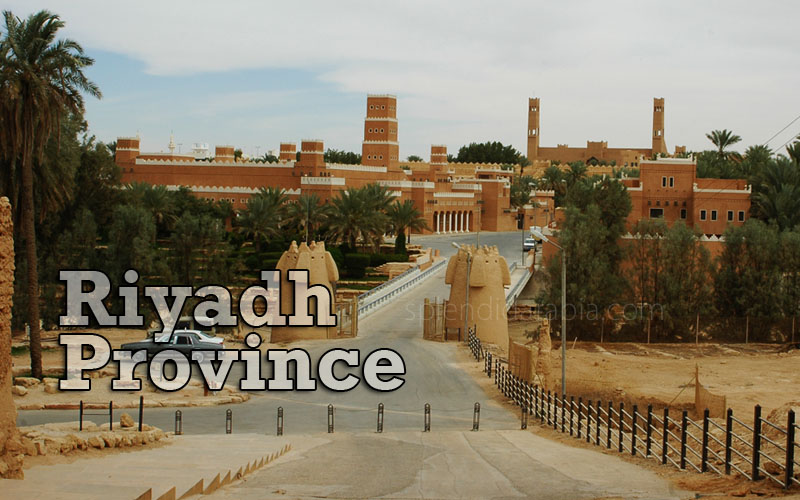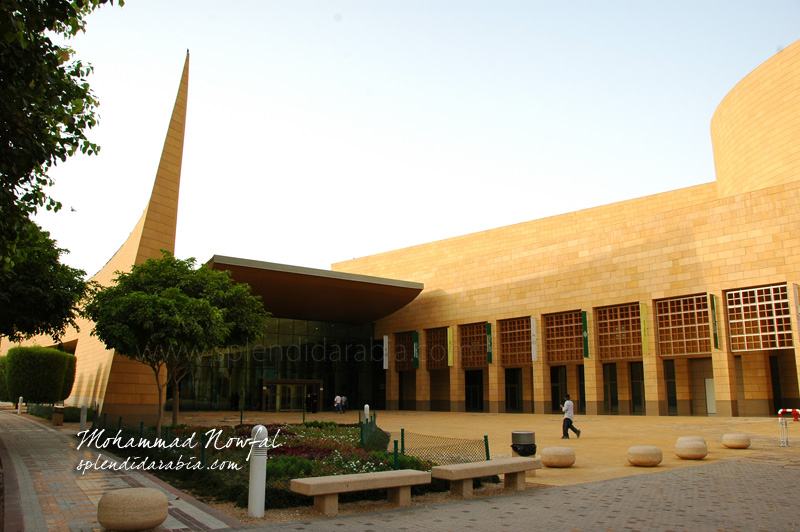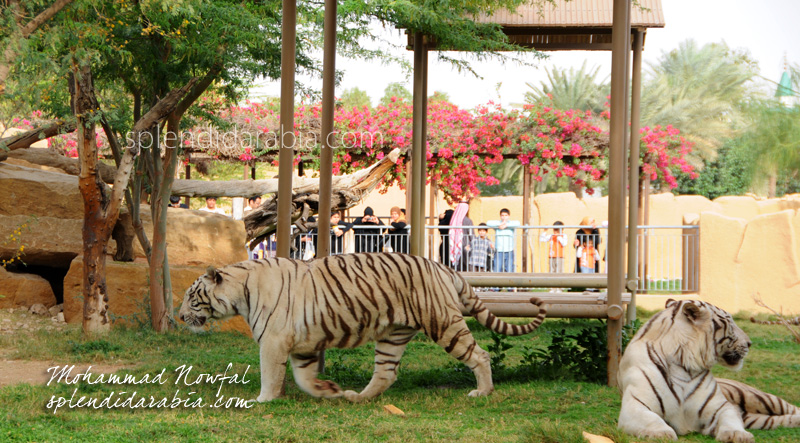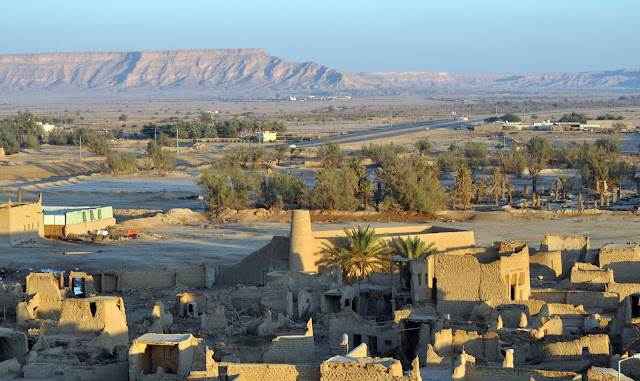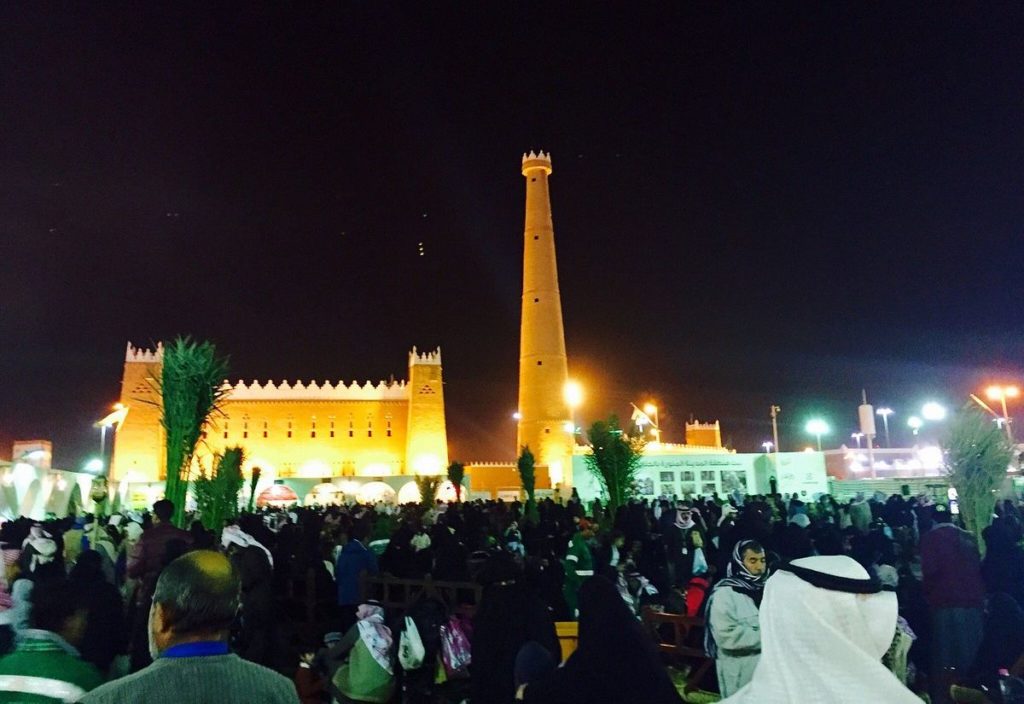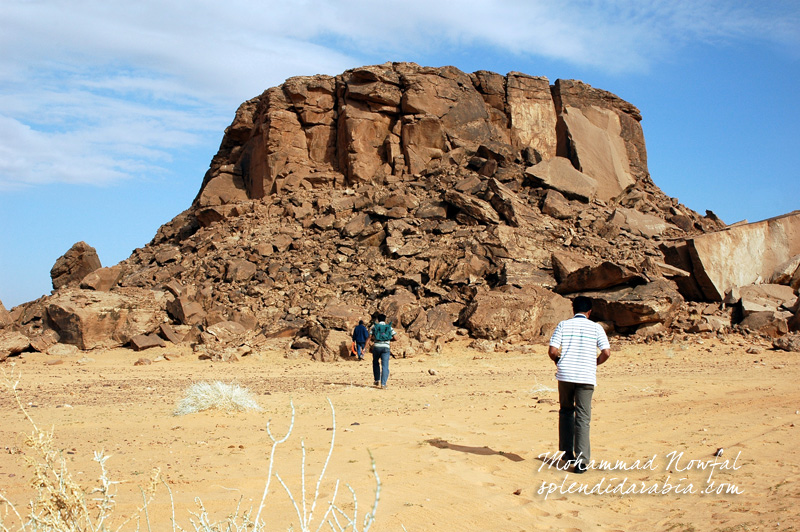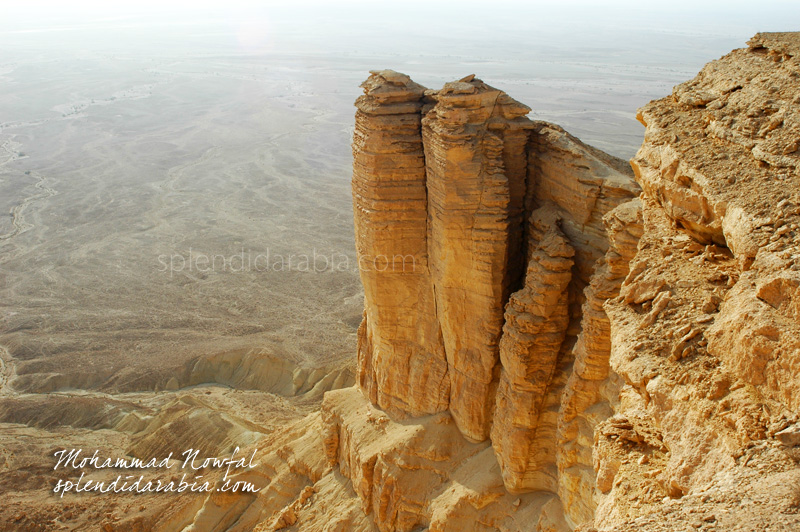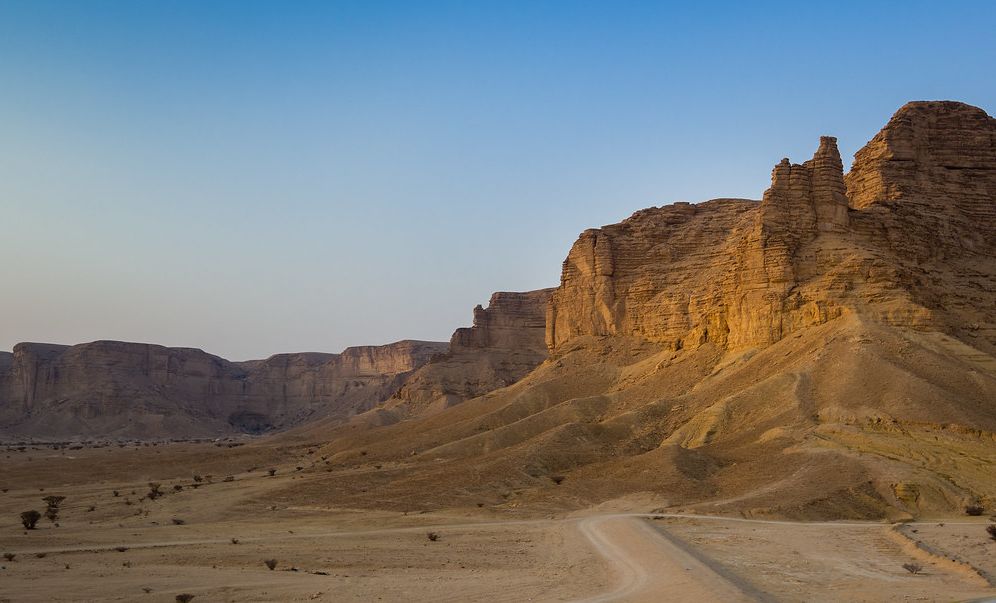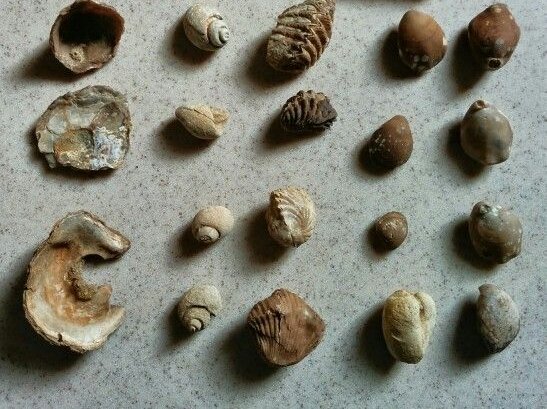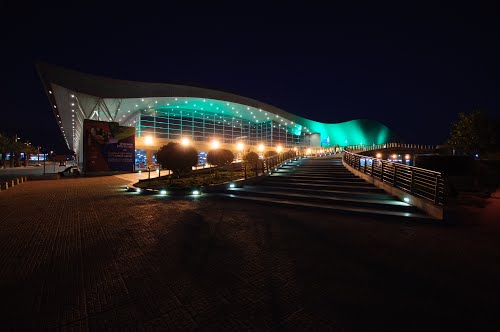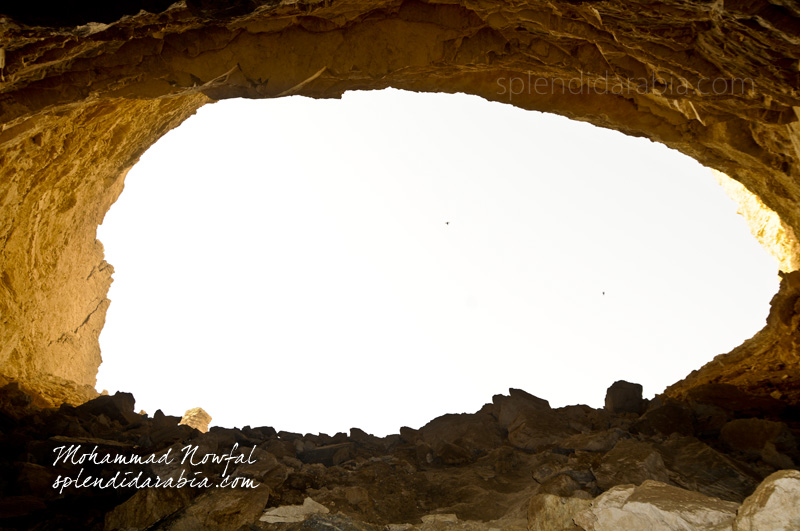Situated in Wadi Hanifah, The Old Diriyyah Palace, 30 kms north of Riyadh, has a key role in the history of Saudi Arabia. Diriyyah is the symbol of Saudi Arabia’s history, culture and traditional architecture. It was the seat of the first government of Saudi Arabia of King Abdul Aziz bin Saud (or Ibn Saud: 1876-1953AD). For over three centuries, Diriyyah was the ruling center of the family of al-Saud.
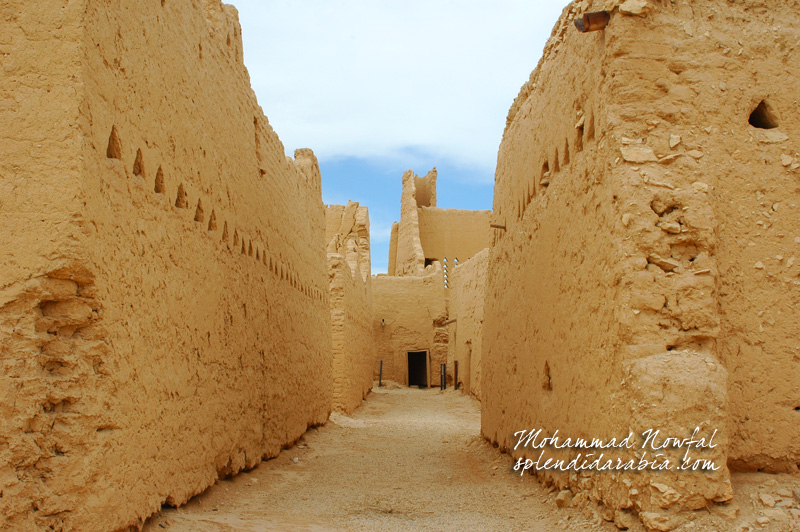

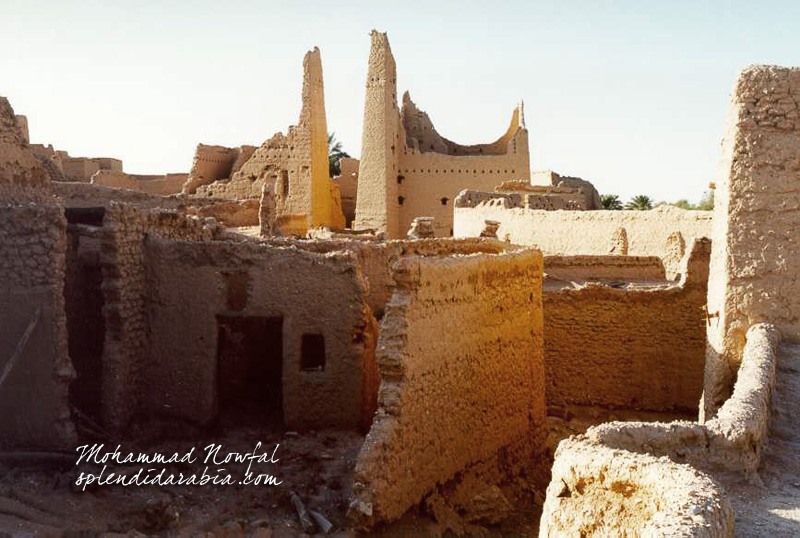

Palace of Salwa
Salwa Palace has the highest remaining walls in Diriyyah. The remnants of the three floored structure shows the marvelous architecture of stones and clay.
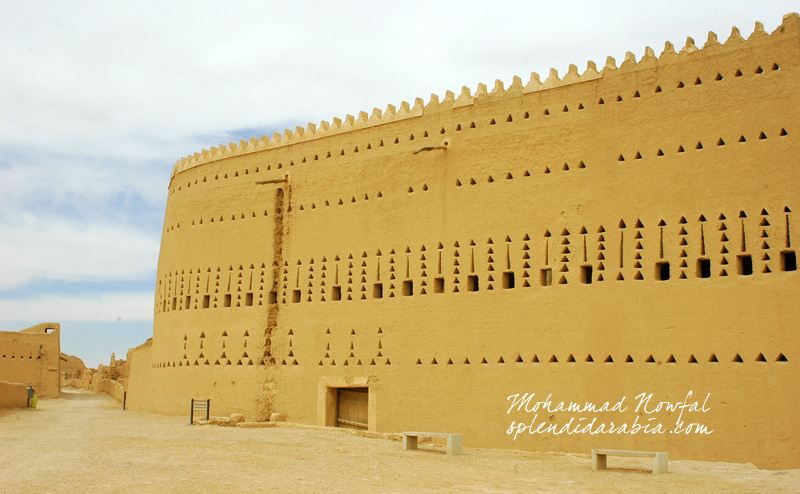

Saad bin Saud Palace
It is the biggest remaining Palace in Old Diriyyah today. It was renovated with careful study of the materials used when it was built originally. Diriyyah Palace is a true example of traditional architecture of Najd by using sun-dried mud-brick for walls and tamarisk beams for roofs. Its wooden doors are decorated with beautiful patterns, strengthened by heavy iron nails and bars.

Tails of a success story…
Iron tubes of cannons left at the entrance of one of the houses of Old Diriyyah Palace.
In Diriyyah, there was a strong man of courage, faith and determination who fought for the truth and stood by the message of true Islam. He was none but al-Imam Muhammad bin Saud, the founder of the first Saudi State. He was the ameer (chief) of Ad Diriyyah, a true desert warrior and son of Saud bin Muhammad bin Migrin. He died in the year 1765. Imam Muhammad bin Saud along with Muhammad bin Abdul Wahhab, decided to work together to implement Ibn Abdul Wahhab’s ideas of purifying Islam from innovations in its practice by bringing it back to its purest form in 1744. Imam Muhammad bin Saud too was called Ibn Saud
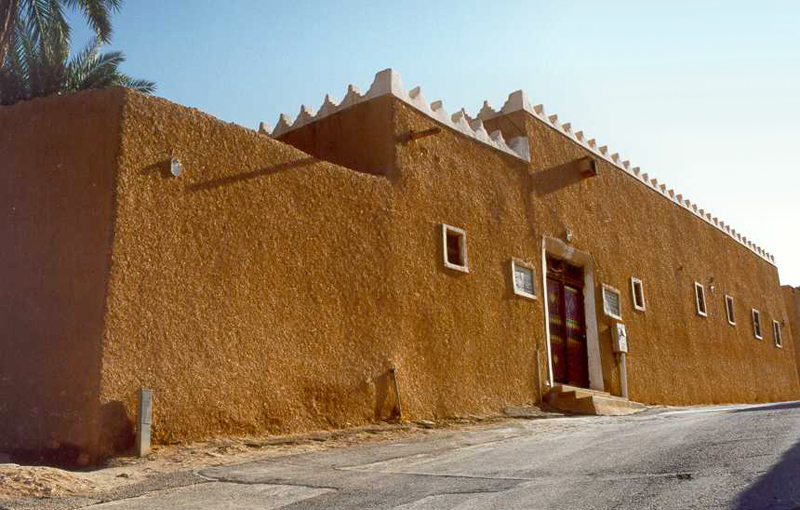

Antiquities Museum
One of the houses at the entrance of the Palace has been transformed to Antiquity Museum. The museum opens Sundays thru Thursdays.
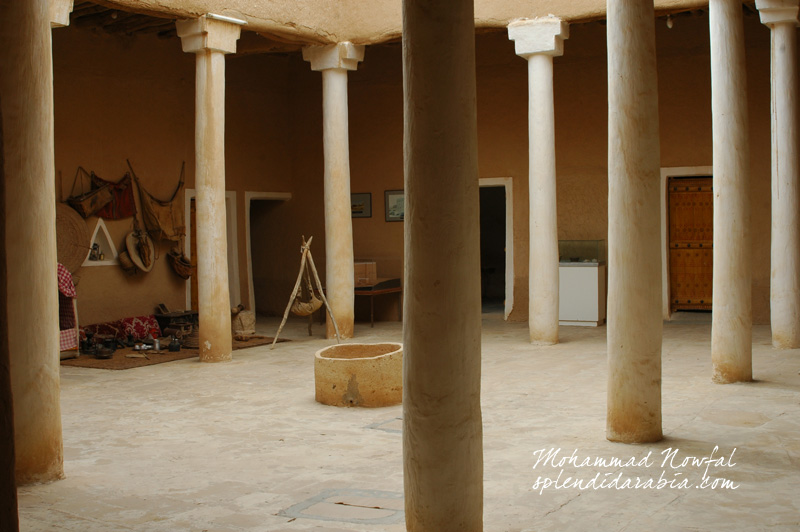

Display of Treasures
This museum of Antiquities, relatively very small, has some very interesting antiques in display that were in use in the region during 18th and 19th centuries. Mabkhara (insence burner), Qara (dried pumpkin used as a milk/ghee container), Qirba (a leather bucket for fetching and keeping water) and Shidad Masama (a wooden saddle to be put on a camel’s back for carrying loads) are a few of those in display. This wide inner courtyard in the middle of the building, surrounded by an open gallery is called “Musbah” and was very common in the design of traditional buildings those days.
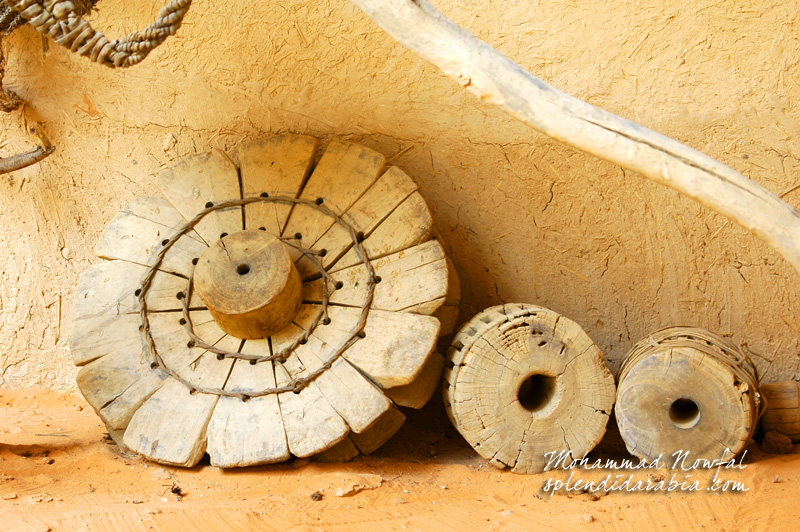

Mih’ala
Mih’ala is a wooden wheel used in the past to draw water from wells. Displayed in the antiquities museum.
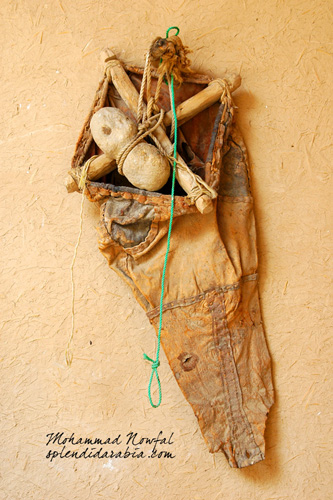

Dalow
This is a leather bucket used for lifting water from wells. On display in the museum.
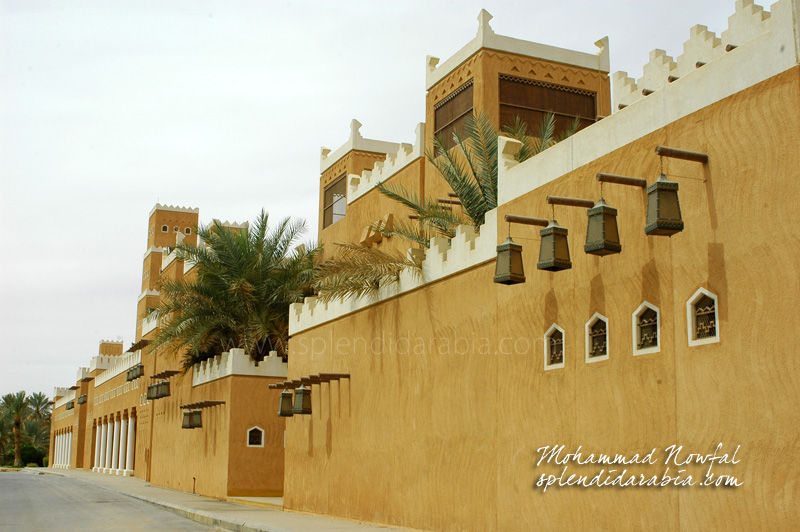

Mosque of Muhammad Bin Abdul Wahhab
This newly constructed mosque is an expansion and renovation project of the Mosque of Muhammad Bin Abdul Wahhab which stands facing the palace on the other side of the wadi (Hanifa). Old Diriyyah palace has been going through an extensive renovation program and is currently closed for the public. Even though, a drive through Wadi Hanifah shall provide you a glimse of this unique and historic palace in Najd.

